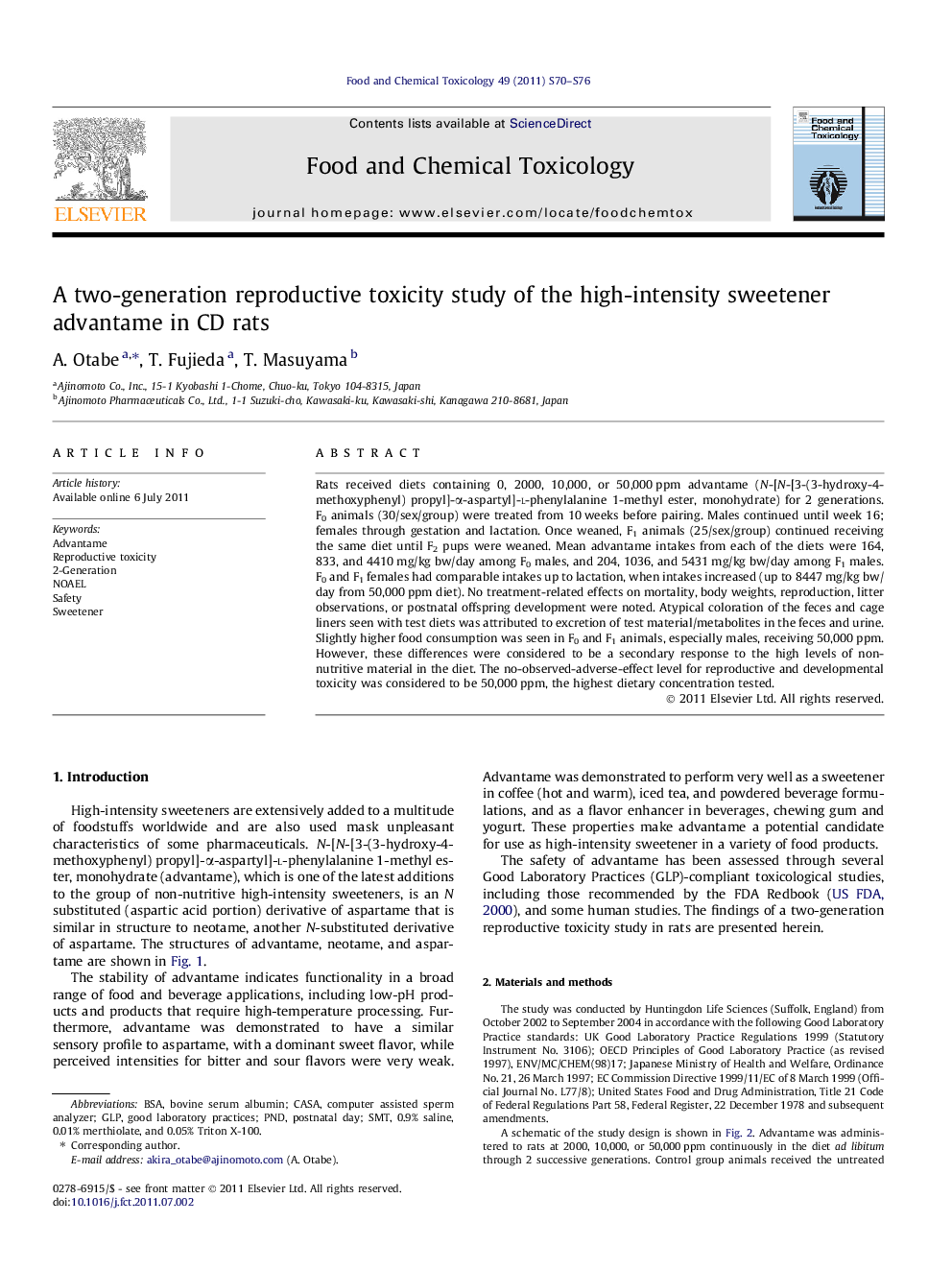| Article ID | Journal | Published Year | Pages | File Type |
|---|---|---|---|---|
| 2585407 | Food and Chemical Toxicology | 2011 | 7 Pages |
Rats received diets containing 0, 2000, 10,000, or 50,000 ppm advantame (N-[N-[3-(3-hydroxy-4-methoxyphenyl) propyl]-α-aspartyl]-l-phenylalanine 1-methyl ester, monohydrate) for 2 generations. F0 animals (30/sex/group) were treated from 10 weeks before pairing. Males continued until week 16; females through gestation and lactation. Once weaned, F1 animals (25/sex/group) continued receiving the same diet until F2 pups were weaned. Mean advantame intakes from each of the diets were 164, 833, and 4410 mg/kg bw/day among F0 males, and 204, 1036, and 5431 mg/kg bw/day among F1 males. F0 and F1 females had comparable intakes up to lactation, when intakes increased (up to 8447 mg/kg bw/day from 50,000 ppm diet). No treatment-related effects on mortality, body weights, reproduction, litter observations, or postnatal offspring development were noted. Atypical coloration of the feces and cage liners seen with test diets was attributed to excretion of test material/metabolites in the feces and urine. Slightly higher food consumption was seen in F0 and F1 animals, especially males, receiving 50,000 ppm. However, these differences were considered to be a secondary response to the high levels of non-nutritive material in the diet. The no-observed-adverse-effect level for reproductive and developmental toxicity was considered to be 50,000 ppm, the highest dietary concentration tested.
► Advantame has been developed as a high intensity sweetener. ► Advantame was tested in a 2 generation reproductive toxicity at 0, 2,000, 10,000, or 50,000 ppm in the diet. ► No treatment-related effects on mortality, body weights, reproduction, litter parameters, or postnatal offspring development. ► The NOAEL for reproductive/developmental toxicity was considered to be 50,000 ppm, the highest concentration tested
